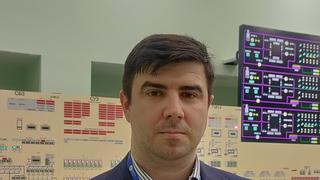Next time when something like the novel coronavirus, the Covid-19, tries its tricks upon the world, humanity will have a potent weapon to tame it — exascale supercomputers.
Today's supercomputers are a hundred times faster than their ancestors of a decade ago. However, next year we will have 'exascale supercomputers' that are a hundred times faster than today, says Priyadarshan Vashista, Professor of Chemical Engineering and Materials Science, Biomedical Engineering, Computer Science and Physics and Astronomy, University of Southern California. "Covid-19 spike protein simulations in various scenarios can run in one day on current supercomputers, rather than weeks and months," he observed in an email interaction with BusinessLine.
Today's supercomputers are petascale ones, which itself is a step higher than 'tera'. (The range goes as: kilo, mega, giga, tera, peta and exa). 'Exa' is one followed by 18 zeros. Needless to say these will be very, very fast computers. To put it in another way, exascale computers are a billion times faster than our mobile phones.
How can supercomputers help in fighting viruses? Prof Vashista explains that supercomputers are a powerful resource for computer simulations of materials, including biochemical materials (molecules that makeup cells, membranes, muscles). They can also simulate processes that occur under the influence of chemical agents. They can solve a vast number of equations.
Vashishta, who is also the director of the Collaboratory for Advanced Computing and Simulations, has edited or co-edited 11 books and authored or co-authored more than 390 papers on topics such as high-performance computing, computer-aided design of high-temperature materials and multimillion-atom simulations of materials and devices.
Answering a question, Vashista explained that in biochemical simulations, one computes forces on each atom from neighbouring atoms. A protein and a membrane can have millions of atoms, so one has to solve millions of equations for every small motion of atoms, and this must be done a thousand times.
For example, the coronavirus has many mushroom-shaped proteins sticking out of a small shell that contains the RNA that replicates itself when the virus attaches itself to a human cell. Scientists are trying to figure out answers to questions such as how does this mushroom-like protein attach to the wall of a human cell, how does the RNA of the virus get inside the human cell, how does this RNA takeover the DNA machinery of the human cell?
"Questions like these can be studied in lab experiments, but it would take much time. Instead, computational scientists can create simulations of these experiments using supercomputers and study the outcomes," Vashista said. "These types of simulations take huge amounts of computing power that supercomputers provide. Answers to these questions can help biologists and experts who are attempting to generate vaccines and shorten the time in their ultimate goal of finding a vaccine that can protect humans from this deadly virus."
India's Center for Development of Advanced Computing (C-DAC), which is part of the Indian Institute of Science (IISc), has announced a hackathon to fight the coronavirus. Christened SAMHAR-Covid-19. (SAMHAR stands for 'Supercomputing using AI, ML, Healthcare Analytics based Research, and means 'to vanquish' in Sanskrit.)
"This opportunity will provide researchers to find solutions for Identifying, Tracking and Forecasting outbreaks of COVID19 and Facilitating Drug Discovery as well," says C-DAC.
The intention behind this hackathon is not just to solve current Covid-19 situation but to prepare the research community to make use of HPC-AI tools and keep ready to predict outbreaks like this. The hackathon is open to researchers, academicians, MSMEs, startups and industries intending to bring out innovative and implementable ideas for prediction, forecasting and building healthcare models that could revolutionize the way we interpret the science of pandemic outbreaks using AI technology on Supercomputers.
C-DAC explains that the human genome is complex and has 3.2 billion base pairs. India became the fifth country in the world to sequence the genome of the novel Coronavirus, or Covid-19, and share its data with the international community. Genome data is essential to build tests, find drugs and vaccines. There are more than 44,000 research articles on Covid-19 already published. The hackathon, apart from 'surveillance and monitoring' and 'forecasting') will use artificial intelligence and data analytics techniques to "come out with solutions to help the medical community to analyze news reports and online content from around the world to recognize anomalies and predict critical events."
India and supercomputers
Where does India stand concerning supercomputers? Vashista observes that despite being the home of the biggest and best in the software business, such as Satya Nadella (CEO, Microsoft), Sundar Pichai (CEO, Google) and Arvind Krishna (CEO, IBM), India - unlike China - does not have much supercomputing infrastructure. But "it would be just a simple fix" by investing in and supporting research in computational science and engineering, he says.
Although the first steps towards supercomputers were taken in 1987, under the erstwhile C-DoT), today, with two supercomputers with 202,824 cores, India ranks 22nd in the supercomputing power, while China tops the list with 228 systems and 30,46,860 cores. However, things are moving faster now, under the National Supercomputing Mission, launched in 2015.
In a press release issued on March 23, the government said that the mission would establish a network of supercomputers ranging from a few Tera Flops (TF) to Hundreds of Tera Flops (TF) and three systems with greater than or equal to 3 Peta Flops (PF) in academic and research institutions by 2022.
"This network of Supercomputers envisaging a total of 15-20 PF was approved in 2015 and was later revised to a total of 45 PF (45000 TFs), a jump of 6 times more compute power within the same cost and capable of solving large and complex computational problems," the release said. With plans to install supercomputing facilities in about 60-70 institutions, the country's supercomputing power is expected to be raised manifold, right up to 100 PF in a couple of years.
The first supercomputer assembled indigenously, called Param Shivay, was installed in IIT (BHU) and inaugurated by the Prime Minister in February 2019. Similar systems Param Shakti and Param Brahma were installed at IIT-Kharagpur and IISER, Pune. They are equipped with applications from domains like Weather and Climate, Computational Fluid Dynamics, Bioinformatics, and Material science.
Plans are afoot to install three more supercomputers soon, one each at IIT-Kanpur, JN Centre for Advanced Scientific Research, Bengaluru, and IIT-Hyderabad. This will ramp up the supercomputing facility to 6 PF.
Then, 11 new systems are likely to be set up in different IITs, NITs, National Labs, and IISERs across India by December this year, which will have many sub-systems manufactured and microprocessors designed in India which will bring in a cumulative capacity of 10.4 PF.
Spreading out the reach to the North-East region, eight systems with a total Compute Power of 16 PF are being commissioned. 5 indigenously designed systems with three 3 PF computing power will be installed at IIT-Mumbai, IIT-Chennai and Inter-University Accelerator Centre (IUAC) at Delhi. It also includes an indigenously build 20 PF system at C-DAC, Pune, and a 100 PF Artificial Intelligence supercomputing system.
One midlevel 650 TFs system is also to be installed at C-DAC Bengaluru to provide consultancy to Start-ups, SSIs & MSMEs.
"Geared to provide Supercomputing facility to about 60-70 institutions Nation-wide and more than thousands of active Researchers, Academicians, and so on, NSM has gathered momentum and is moving fast not only towards creating a computer infrastructure for the country but also to build the capacity of the country to develop the next generation of supercomputer experts," the release said.







Comments
Comments have to be in English, and in full sentences. They cannot be abusive or personal. Please abide by our community guidelines for posting your comments.
We have migrated to a new commenting platform. If you are already a registered user of TheHindu Businessline and logged in, you may continue to engage with our articles. If you do not have an account please register and login to post comments. Users can access their older comments by logging into their accounts on Vuukle.